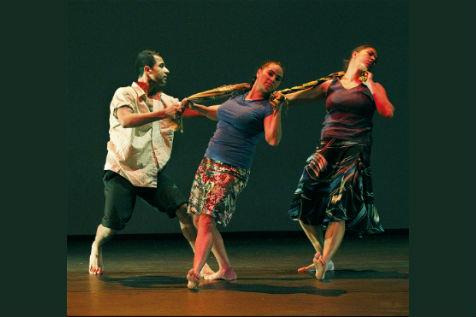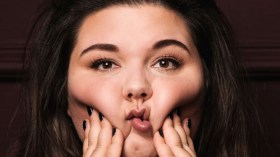This weekend the Australia Council for the Arts will bring together 60 of Australia’s leading practitioners and thinkers in the area of experimental practice to discuss current issues and challenges facing artists in this field.
Held at Sydney’s Carriageworks on Sunday and Monday, the National Experimental Arts Forum is a crucial step in identifying and developing the best policy framework to support experimental art.
The forum will feature another important step, an announcement of the establishment of the Emerging and Experimental Arts section at the Australia Council, which will replace the existing Inter-Arts Office and be charged with supporting artists exploring emerging artforms and experimental arts.
As the current director of Inter-Arts and the director of the new Emerging and Experimental Arts sections, I’m excited about this transition. It is a transition that will see the term experimental arts used as the umbrella for so many of the arts practices we have funded over the last 30 years. Arts practices we have variously described as, art & technology, hybrid arts, new media arts, interdisciplinary arts, and more recently inter-arts.
Explaining to the everyday punter the meaning of hybrid arts was no mean feat; as was finding a pithy description for new media arts. An eloquent way to summarise inter-arts for a quick elevator pitch provided the same challenge!
Experimental art is a useful term. It can umbrella all the other words we use to describe new art practices such as Inter-disciplinary, hybrid, trans-multi-and-cross-disciplinary, socially engaged art and locative media. But it’s more easily understood by someone who has no experience of this sort of work. People instantly have a sense of what it might be when I mention it – a welcome change from the blank looks encountered when talking about hybrid art or inter-arts in a conversation.
I find it refreshing to return to a word like experimental to describe this work. It’s a good old word that has been in use for hundreds of years. It’s embedded in our language and as a concept in our thinking; resonating with notions of exploration, enquiry, risk, and importantly failure. As with science, in the arts not every experiment is a success. However it’s work taking a risk to experiment for those moments when a truly new discovery is made.
Experimental art is a fluid term, allowing the art it describes to evolve over time. In the late 60s and early 70s, artists were exploring the use of moving image through video, as the technology became more accessible. What was back then seen as an experimental, eccentric and even peculiar artistic practice has in the last decade, become accepted and common place in galleries, on urban screens and in art installations across the world. Video art is now bought for public and private collections all over the world.
The Australia Council has a long history of developing policy and supporting artists working in this field through the Art & Technology Advisory Committee in the mid 80s, the Hybrid Arts Committee of the early 90s, the New Media Arts Board of the late 90s and the Inter-Arts Office of the mid 2000s.
So why has the Australia Council placed such importance on this work over many years. And why dedicate a section of the Australia Council to supporting experimental practice? I think it’s because our society benefits from those people who endeavour to push boundaries, to challenge orthodoxy and to see the world in a whole new way. The arts play an important role in this.
And within the arts, a smaller group of artists and arts practitioners work at the fringes of established practice; experimenting, exploring and developing new ideas and approaches to art. They play with technology and new media. They experiment with form and content. They challenge notions of the artist and audience. They take us out of our own comfort zone and confront how we think about and experience art.
The National Experimental Arts Forum will set the scene for a much larger national forum in 18 months. I hope that this kind of forum for experimental practice will become a regular feature – helping organisations like the Australia Council frame policy that best supports artists working in experimental practice.
The agenda for the forum will be set by participants themselves on the first day. We are not sure what to expect, but we also have a good sense of what some of the key issues might be. It will no doubt be a vigorous and healthy debate.
The forum outcomes will form the basis for discussions across the country leading up to the next National Experimental Arts Forum in around 18 months. Those not participating in the forum can join the discussion on line through twitter #IAONEAF.





